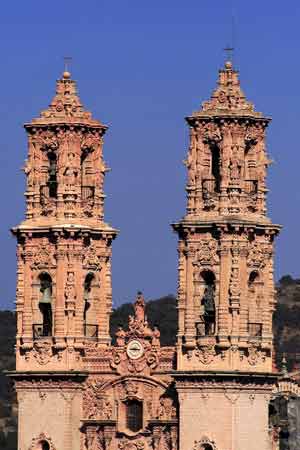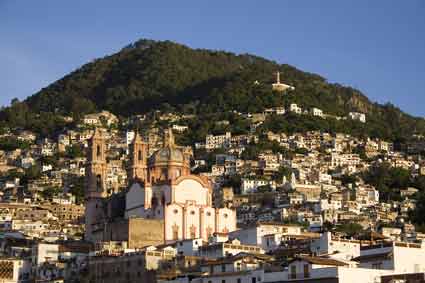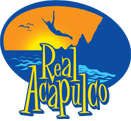Taxco Day Trip
Taxco (more formally called Taxco de Alarcón) was named by the indigenous inhabitants as “tlacht-co” or place to play ball. Taxco is a beautiful, colonial-style city, set within the Southern Sierra Madres at nearly 6,000 feet of altitude. It is about 190 kilometers from Mexico City and a bit less than four hours’ drive from Acapulco, on good roads.

Taxco flourished during colonial times because it was the center of silver mining in the mountains. The miners built their city on the side of the mountain, so the streets are narrow and steep. The paving is with cobblestones, and the houses have the traditional exposed beams with whitewashed walls and red roof tiles. About 50,000 inhabitants live in the town itself.
Today the work of Taxco’s talented silversmiths has made it one of Mexico’s most popular tourist destinations. From Acapulco it is possible to go to Taxco, spend the day and return in the evening. It makes for a long day, but many visitors believe a day in Taxco should be part of their trip to Acapulco. Taxco is also a popular destination because its colonial architecture has been well-preserved, and the beauty of the old town center, with the famous Baroque church of “Santa Prisca,” is widely known. The Government of Mexico has conferred upon Taxco the recognition of being one of the country’s “Magic Towns” (“Pueblo Mágico”).
Taxco’s post-Columbian history starts with Cortez himself, who explored the area in 1524 looking for tin to help fashion armor for his troops. He found both tin and iron. Six years later the town was established, and mining continued, including much silver, which was sent to Spain. Soon the silver seemed to have been exhausted, and the town no longer prospered. Then, in 1716, a prospector named Don José de la Borda discovered a new vein rich in silver, and Taxco had a rebirth of prosperity from the trade in silver and pieces crafted from it. Don José himself became very wealthy and built many of Taxco’s oldest surviving buildings, including a school, a government office, and Taxco’s iconic parish Church of Santa Prisca. Many call Santa Prisca a cathedral, even though it is a parish church and not the seat of a diocese. Don José is thought of as the father of Taxco. His son was a priest at Santa Prisca.

During the struggle for independence, the Spanish barons who controlled the silver mines in Taxco destroyed them rather than have them fall into the hands of the insurgents. It was not until the 20th century that silver mining again was taken up in Taxco. William Spratling, a professor of architecture from Tulane, visited Taxco in 1926. At the suggestion of Dwight Morrow, the U.S. ambassador to Mexico, Spratling commenced a project to resuscitate the silver crafts of Taxco. In 1931 he brought in a goldsmith from nearby Iguala and trained locals in the art of working fine metals. William Spratling is honored in Taxco as the “father of Mexican Silver.” The Spratling Museum by the Church of Santa Prisca contains many pre-Columbian artifacts and a large collection of silver pieces. During the last week of November of each year Taxco celebrates its silver heritage with a National Silver Fair.

